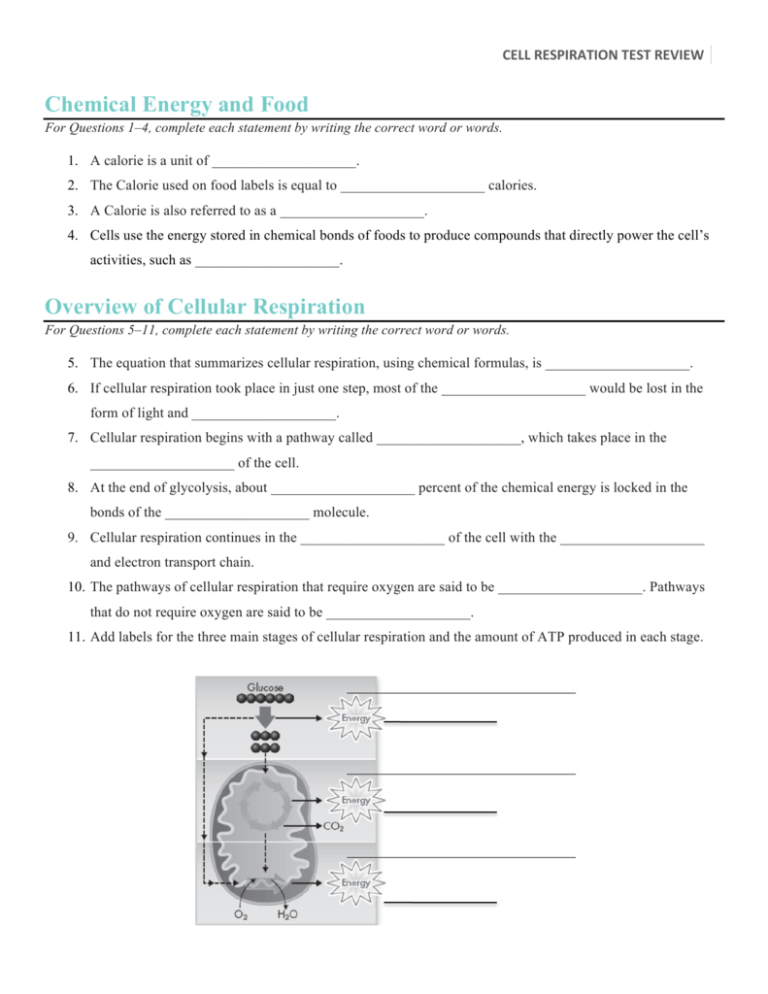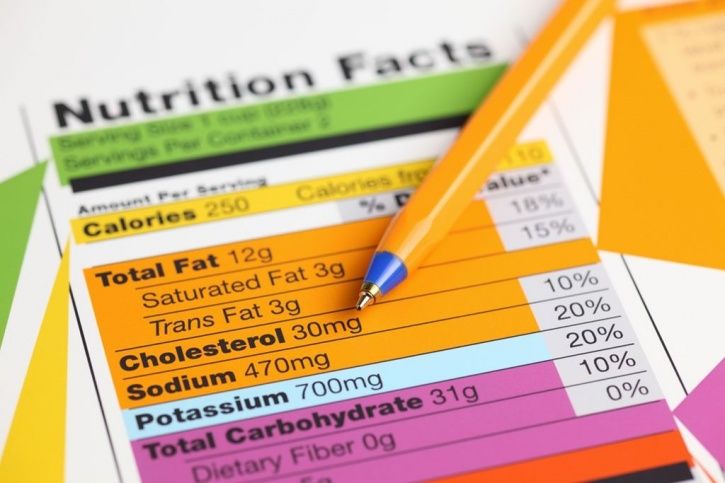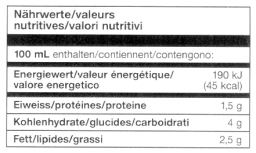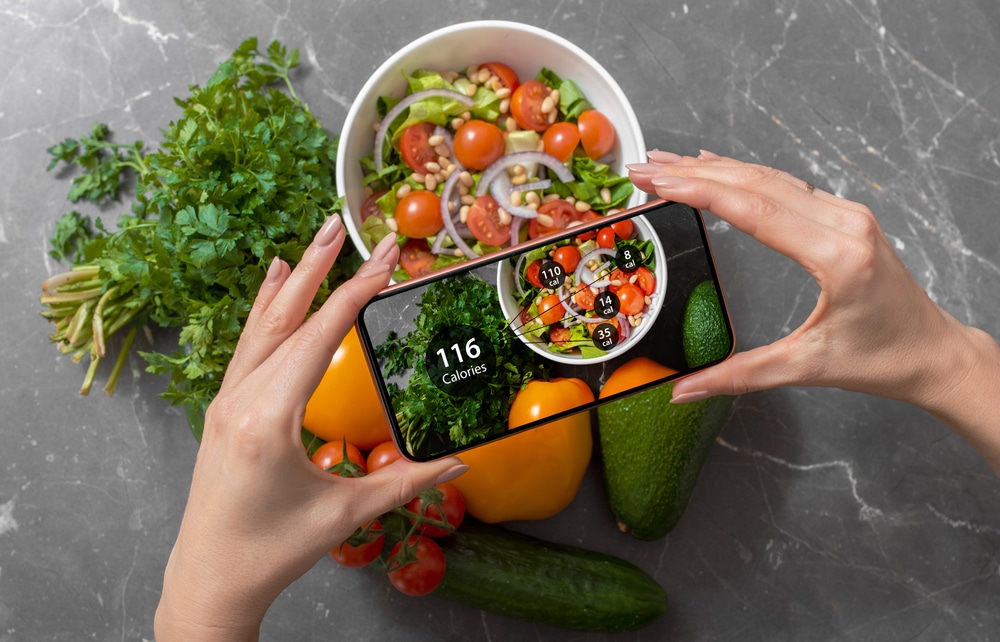40 the calorie used on food labels is equal to calories
› 02 › 28Death of the calorie | The Economist Feb 28, 2019 · A senior adviser to the UN’s Food and Agriculture Organisation warned in 2002 that the Atwater “factors” of 4-4-9 at the heart of the calorie-counting system were “a gross ... thegeriatricdietitian.com › 5-best-high-calorie-drinks5 Best High Calorie Drinks - The Geriatric Dietitian Apr 14, 2020 · Serving Size x Calories per Serving= Calories Consumed. For example, a 20-ounce bottle of soda contains 2.5 servings. Most people drink the whole bottle, right?!… so, you have to do the math and not simply rely on the number listed under calories. Calories in drinks will vary by the type and amount of ingredients used.
for Hundreds of Foods: Your Calorie Chart Database Welcome to Calories.info, a food database that will help you discover the caloric content and other facts about common foods. When you use the calorie database to understand how your body gets energy out of your favorite meals and snacks, paying particular attention to the number of calories in food you’ve eaten, you’ll be empowered to make dietary choices that never leave you with guilt ...

The calorie used on food labels is equal to calories
How calories are calculated: The science behind your food He also found that alcohol has 7 calories per gram. "Let's say you have a food that contains 10 grams [0.35 ounces] of protein (10 x 4 = 40) and 5 grams [0.2 ounces] of fat (5 x 9 = 45), then the ... Calories on the Label Equal Calories Stored - Fact or Myth? By the time your body is done burning the calories and digesting food only X% of the original calories is left over. This alone proves that a calorie in isn't a calorie stored. This is the thermic effect of different macronutrients according to one study: [3] [4] Fat: 2-3%. Carbs: 6-8%. How does a Calorie on a food label relate to a calorie that is produced ... Photosynthesis removes carbon dioxide from the atmosphere, and cellular respiration puts it back. Photosynthesis releases oxygen into the atmosphere, and cellular respiration uses oxygen to release energy from food. ... The Calorie used on food labels is equal to 1000 calories.
The calorie used on food labels is equal to calories. › what-is-a-calorie-3432508What Do Calories Mean in Food and Exercise? - Verywell Fit Oct 12, 2021 · The range of daily calorie burning is from 1600 calories (kcal) for a sedentary woman or an older person to 2800 calories (kcal) for active men, very active women, and teenage boys. You can check your calories burned per day with a calculator based on your height, weight, age, and activity level. 9.1 cellular respiration overview Flashcards - Quizlet The calorie used on food labels is equal to ____ calories. 1000. A calorie is also referred to as what? Kilocalorie. Cells use energy stored in chemical bonds of food to produce compounds that directly power the cells activities such as what? ATP. Food Labels: Calories VS Energy - Marci R.D. In case you haven't noticed, their food labels don't contain the word "calories.". Instead, they use the word "energy.". Every time I see that it brings a smile to face. In my opinion, the word calorie seems to possess a laundry list of negative associations. Count your calories. Cut your calories. Burn your calories. Choose your ... › article › 311197-how-manyHow Many Calories Does One KCAL Equal? | livestrong Jan 30, 2020 · And as the article title suggests, NHS also provides an idea of what 100 calories look like, using examples of how much of a certain kind of food would be equivalent to 100 calories. For example, about 4 teaspoons of sugar equal 100 calories. Other foods that add up to 100 calories: three slices of turkey or a large apple or banana.
Biology Flashcards - Quizlet The Calorie used on food labels is equal to. 1000 calories. A Calorie is also referred to as a. Kilocalorie. Cells use the energy stored in chemical bonds of foods to produce compounds that directly power the cell's activities, such as. ATP. How Do They Calculate Calories on Food Labels? 5 grams of fat (5 x 9 = 45 calories) 22 grams of carbohydrate (22 x 4 = 88 calories) 2 grams of protein (2 x 4 = 8) ...should contain approximately 140 calories. It's important to recognize that 4-9-4 is an average, and not an exact amount. For example, 1 gram of fat in one food may yield 8.34 calories while 1 gram of fat from another food ... Why Do Food Labels Use Calories Instead of Joules or Kilojoules? Atwater System. The Atwater system is generally used by the food industry for U.S. labels. This is a standard for calculating the energy value of carbohydrates, fats and proteins. These kilocalories are expressed as "calories." The system assigns 4 calories per gram to carbohydrates, 9 calories per gram to fats and 4 calories per gram to proteins. Calorie Lab - Northern Arizona University Read the labels on the packages where you got the nut and cracker. In this example, we used an almond and a Cheeze-It cracker. Divide the total calories by the serving size in grams to get the expected calories/gram for the two foods. Almond nut: 250 Cal / 43 g = 5.8 Cal / g; Cheeze-It cracker: 280 Cal / 56 g = 5 Cal / g
Why most food labels are wrong about calories - The Conversation Food labels seem to provide all the information a thoughtful consumer needs, so counting calories should be simple. But things get tricky because food labels tell only half the story. A calorie is ... Understanding calories - NHS To find the energy content in kilojoules, multiply the calorie figure by 4.2. The label will usually tell you how many calories are contained in 100 grams or 100 millilitres of the food or drink, so you can compare the calorie content of different products. Many labels will also state the number of calories in 1 portion of the food. The Calorie used on food labels is equal to how many calories? Explanation: The food Calorie (capital "C") is actually a kilocalorie ( 1 ×103 calories)! Why would someone do this? Well, probably because it takes about 2 megacalories ( 2 ×106) to run a person for a day. So it is more convenient to talk about 2,000 Calories than it is to talk about 2 million calories. Answer link. "Calorie" vs. "calorie" - Kirk Mahoney . com The word "calorie" — with a lowercase "c" — means an amount of heat equal to 4.184 ... with a capital "C" — as "calorie" — with a lowercase "c" — when referring to the energy value of a food item. For example, a "2000-calories-per-day diet" — with a lowercase "c" — would provide almost no energy and ...
› food-calorimetry+ › tr23949Food Calorimetry: How to Measure Calories in Food - Carolina.com Food Calorimetry: How to Measure Calories in Food. Laura Jennings Product Developer. People who check nutrition labels to make informed decisions about which foods to eat and which to avoid often base those decisions solely on the number of calories per serving. A calorie, like a joule, is a unit of energy. The International System of Units (SI ...
Calories on the New Nutrition Facts Label | FDA 2,000 calories a day is used as a general guide for nutrition advice, but your calorie needs may be higher or lower depending on your age, sex, height, weight, and physical activity level. Eating ...
Convert calorie [nutritional] to calories - Conversion of Measurement Units The answer is 0.00099976115410337. We assume you are converting between calorie [nutritional] and calorie [15 °C]. You can view more details on each measurement unit: calorie [nutritional] or calories. The SI derived unit for energy is the joule. 1 joule is equal to 0.0002388458966275 calorie [nutritional], or 0.23890295761862 calories.
Calories: Energy Units - Chemistry of Food and Cooking Calorie (with a capital "C," abbreviated Cal) 1 Calorie is the amount of energy needed to heat 1 kg of water by 1 °C. 1 Calorie is equal to 1000 calories. 1 Calorie is also equal to 1 kcal (because using the metric prefix "kilo-": 1 kcal = 1000 cal) Although the joule is the proper SI unit for energy, we will use the calorie or the ...
Are all Calories Equal? - Talia Cecchele He found that (1): Fats contain 9 calories for every 1 gram of fat. Carbohydrates contain 4 calories for every 1 gram of carbohydrates. Proteins contain 4 calories for every 1 gram of protein. Alcohol contains 7 calories for every 1 gram of alcohol. This is how the calorie values of foods are calculated today.
› nutrition › kcal-vs-caloriesKcal vs. Calories: Differences and How to Convert - Healthline Mar 08, 2021 · When it comes to nutrition and exercise, kilocalories (kcal) and calories equal the same amount of energy. Calories may also be expressed as kilojoules (kJ), with one calorie or kcal equaling 4.18 kJ.
Calorie - Wikipedia Thus, 1 large calorie is equal to 1000 small calories. In nutrition and food science , the term calorie and the symbol cal almost always refers to the large unit. It is generally used in publications and package labels to express the energy value of foods in per serving or per weight, recommended dietary caloric intake , [6] [7] metabolic rates ...
How does a Calorie on a food label relate to a calorie that is produced ... Photosynthesis removes carbon dioxide from the atmosphere, and cellular respiration puts it back. Photosynthesis releases oxygen into the atmosphere, and cellular respiration uses oxygen to release energy from food. ... The Calorie used on food labels is equal to 1000 calories.







Post a Comment for "40 the calorie used on food labels is equal to calories"